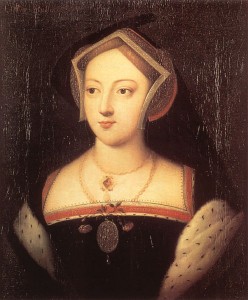 Not a week goes by without me receiving at least one question about Mary Boleyn, sister of Anne Boleyn, so I thought it would be good to cover her in my video series on ‘questions about Anne Boleyn’, even though she isn’t Anne!
Not a week goes by without me receiving at least one question about Mary Boleyn, sister of Anne Boleyn, so I thought it would be good to cover her in my video series on ‘questions about Anne Boleyn’, even though she isn’t Anne!
Mary Boleyn is such a popular historical character, but are our ideas of her based on fiction rather than history?
In the first of a two-part series on her, I introduced the mythical Mary Boleyn and then look at what we actually know about this Boleyn sister. In the second part (coming soon!), I will look at some of the myths, assumptions and theories that surround her.
It seems fitting to share this video on the anniversary of her marriage to her first husband, William Carey. They got married on 4th February 1520. You can read more here.